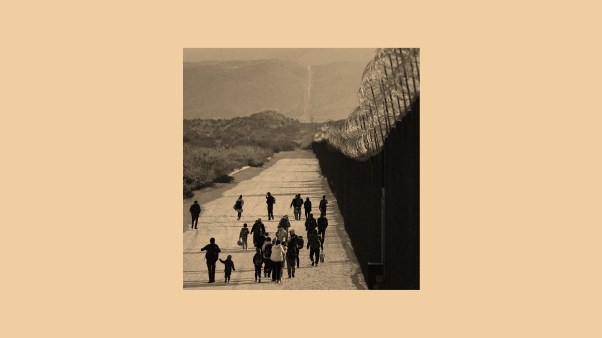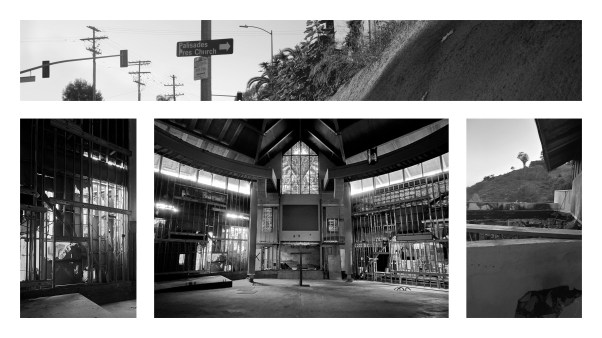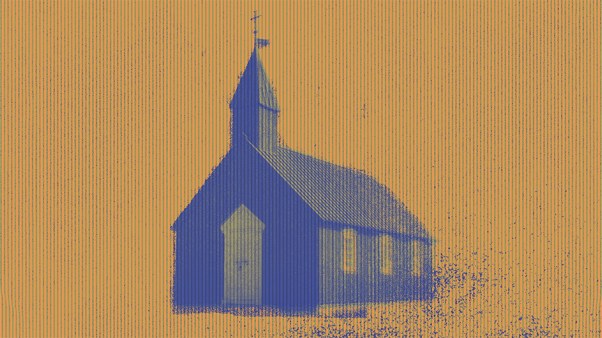A recent New Yorker cartoon shows a bearded, robed figure ascending a mountain. Halfway up he encounters a sign: “Think.” The final drawing shows him reversing course and descending! Should this be the posture of those addicted to what I have called “Ark fever” (CHRISTIANITY TODAY, July 2, 1971)? Is there enough evidence for the thinking person to believe that Noah’s ship or a substantial vestige of it remains on Greater Ararat in Turkey?
Literary detection has yielded some negative, together with a considerable quantity of positive, evidence. On the negative side, I have been able to establish that the March 29, 1953, Chicago Sunday Tribune article on the 1916 Russian expedition to Ararat contained serious misinformation—misinformation that has conditioned more than one subsequent writing on the Ark’s survival. The author, Paris correspondent Henry Wales, who died in 1960, claimed that “information relating to the existence of remains of the Ark … is contained in documents presented to the library of the University of Geneva by Gen. Dmitri Osnobichine, an aide to the Grand Duke Cyril in Czarist days.”
A year’s research has exploded this claim. After thoroughly checking the books Osnobichine gave to the University of Geneva library and finding nothing, I located Grand Duke Cyril’s surviving son Vladimir, who sent me the following note: “I have never come across the report in question among my father’s archives.”
Vladimir promised to make every effort to locate Osnobichine’s living relatives, and several months later I received a letter from Mme. Alexandre Iordanow-Osnobichine of Rome. The general was her husband’s uncle, and she stated that “no report, no document or notes” concerning the Russian expedition of 1916 could be found “amongst the personal or family papers that came to my husband after the general’s death in 1956”; moreover, General Osnobichine had been in the Caucasus only from 1892 to 1894 and had never been aide-de-camp to Grand Duke Cyril.
Now it should be strongly emphasized that these facts do not put the Russian expedition sighting of 1916 in question (we have sworn testimonies from the families of now deceased soldiers who were on the expedition; and I myself conversed with White Russian colonel Alexander Koor shortly before his death a few months ago concerning his contacts with officers who had reliable data on the expedition and its sighting of what was unquestionably a ship on Ararat).
Positively, a year’s work with the literary sources has powerfully reinforced my conviction that the continued existence of the Ark on Ararat is one of the strongest traditions relating to biblical history—a tradition far stronger than those successfully used by modern Palestinian archaeologists as keys to their great discoveries attesting the accuracy of biblical accounts. Here is but a sampling of important post-Josephus references to the Ark’s survival on Ararat: Theophilus of Antioch (second century A.D.); Elmacin or Ibn-Amid (thirteenth century), author of the great Historia saracenica; Haithon of Gorhigos (fourteenth century) and his contemporaries Odoric of Pordenone and merchant traveler Pegolotti; seventeenth-century Dutch traveler J. J. Struys, who, in assisting a hermit with a broken leg, climbed for a week on Ararat and obtained a sworn statement from this twenty-five-year inhabitant of the mountain as to the Ark’s survival and saw pieces that the hermit had taken from it; the seventeenth-century German merchant traveler Oelschlager (Olearius), who notes that “time hath so hardned the remainders of the Ark, that they seem absolutely petrify’d”; and nineteenth-century ecumenical prelate Archdeacon Nouri, who, after three unsuccessful attempts, scaled Ararat to find “the ark wedged in the rocks and half filled with snow and ice.” Such literary traditions, taken in conjunction with twentieth-century sightings by a Russian expedition, mining engineer George Greene, and French amateur explorer Navarra, give the best of reasons for continuing up Ararat after meeting the pensive warning sign!
This is precisely what my son David and I again did in 1971. Immediately after our return from Turkey in September of 1970, we began seeking government permissions for the next year. When we were nicely in motion and the possibilities looked bright, the government changed (March, 1971)! Since ministry personnel in Ankara were replaced, we had to start over. By June, although high offices in Turkey had assured us we could proceed, the general situation still remained in doubt. During the first week of July it was decided that our chief compatriot, Mr. Eryl Cummings of Farmington, New Mexico, would go immediately to Turkey to deal with the permissions problem in depth and would meet us on the mountain when we arrived the week of August 9.
As it turned out, because of continuing tensions within the Turkish bureaucracy between those who favored our cause and those who did not, Mr. Cummings allowed discretion to serve as the better part of valor and personally forewent exploration; he wisely saw that to press the permissions too far might have created grave problems for the future.
David and I, however, were able to operate in terms of the limited permissions secured and were thus the only Americans on the restricted north face of Ararat in the summer of 1971. We flew to Erzurum, and then drove the northern road to Idgir. There we hired a tractor to take us over a virtually impassable route through swollen streams to the mud-hut village of Ahora, where we slept on the floor of the mayor’s one-room home (with mayor and family!). Securing horses for ourselves and donkeys for the supplies, we proceeded to the 3,600-meter level of Lake Kop—the focal center of past sightings. Treacherous climbing with crampons and ice axes brought us to 4,150 meters, a bit above the location of Navarra’s discoveries. Although we were not able to add a personal sighting to past accounts, we staked out the area in preparation for detailed work by our full crew another year.
Meanwhile, Mr. Cummings, below in the foothills, took overlapping telescopic photographs of the entire area at the relevant altitude. This will help greatly in analyzing one particularly tantalizing color slide that seems to show a huge object wedged in a crevasse—an object perhaps “absolutely petrify’d”!
Further work now awaits another August and the grace of the Turkish authorities. Reinhold Niebuhr once said that the Church is like the Ark: you couldn’t stand the stench within if it weren’t for the storm without. Our investigation is also like that: we couldn’t stand the strain of Ararat if the winds of unbelief in the authority of God’s Holy Word didn’t impel us to do all that is possible to confirm its entire trustworthiness.
JOHN WARWICK MONTGOMERY










